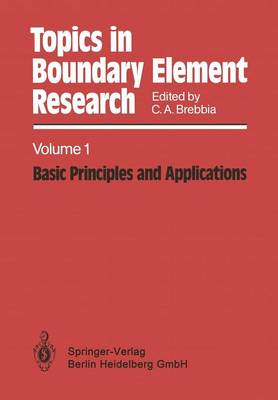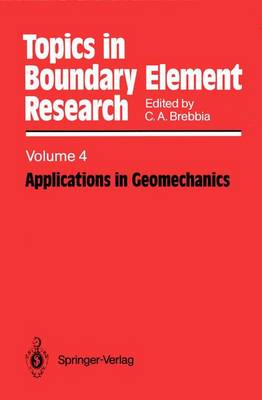Topics in Boundary Element Research
2 primary works
Book 1
As the Boundary Element Method develops into a tool of engineering analysis more effort is dedicated to studying new applications and solving different problems. This book contains chapters on the basic principles of the technique, time dependent problems, fluid mechanics, hydraulics, geomechanics and plate bending. The number of non-linear and time dependent problems which have become amenable to solution using boundary elements have induced many researchers to investigate in depth the basis of the method. Chapter 0 of this book presents an ap proach based on weighted residual and error approximations, which permits easy construction of the governing boundary integral equations. Chapter I reviews the theoretical aspects of integral equation formulations with emphasis in their mathematical aspects. The analysis of time dependent problems is presented in Chap. 2 which describes the time and space dependent integral formulation of heat conduction problems and then proposes a numerical procedure and time marching algorithm. Chapter 3 reviews the application of boundary elements for fracture mechanics analysis in the presence of thermal stresses. The chapter presents numerical results and the considerations on numerical accuracy are of interest to analysts as well as practising engineers.
Book 4
The first volume of this series dealt with the Basic Principles of Boundary Elements while the second concentrated on Time-dependent Vibration Problems and volume three on the Computational Aspects of the method. This volume deals with applications of the method to a wide variety of geomechanical problems, most of which are ideally suited for boundary elements and help to demonstrate the potentiality of the technique. The chapters in this volume bring together a series of recent advances made in the applications of BEM for soil mechanics, consolidation, foundations and groundwater flow problems. Research on these problems has progressed to such a degree that the BEM can be employed as an engineering analysis tool.

